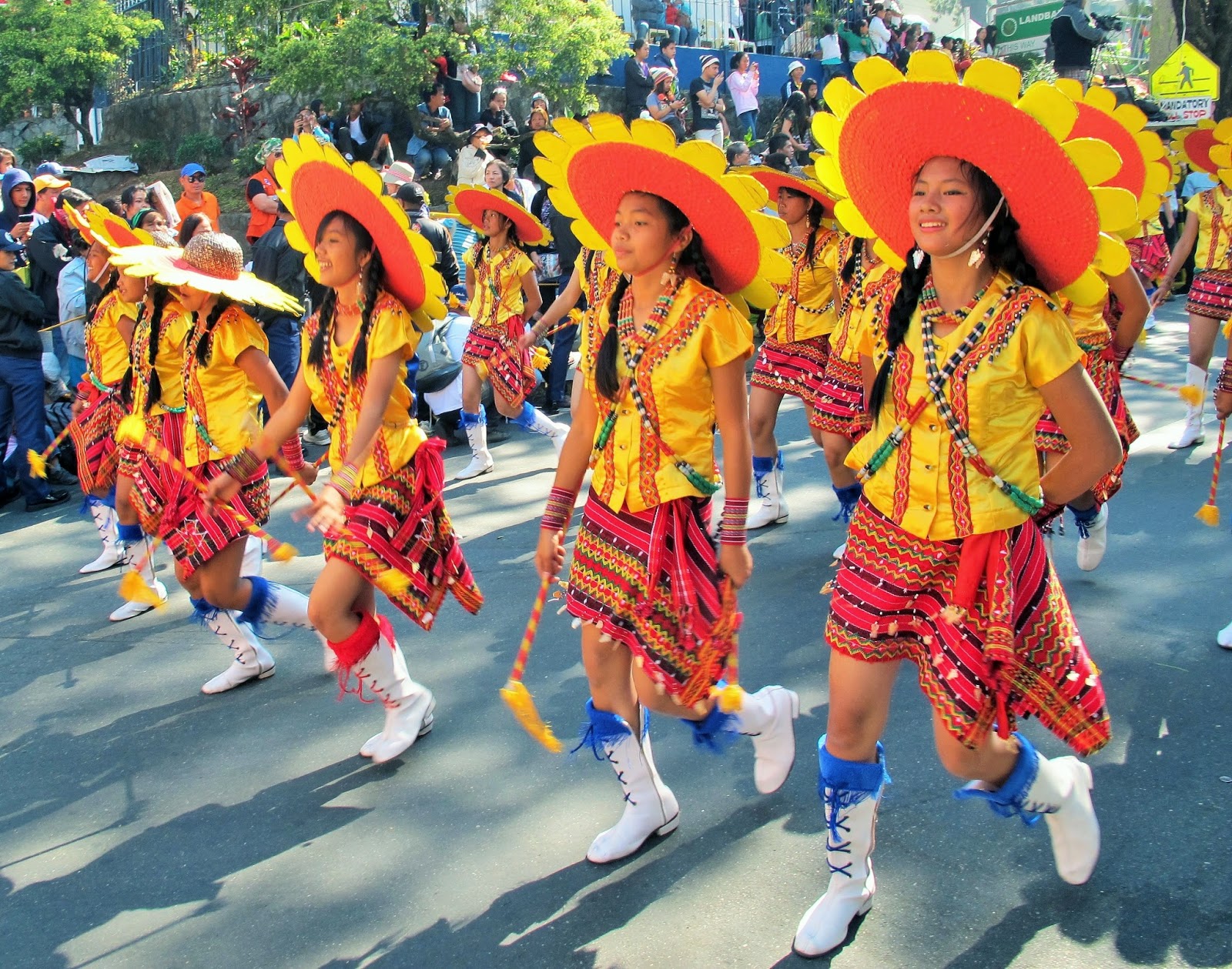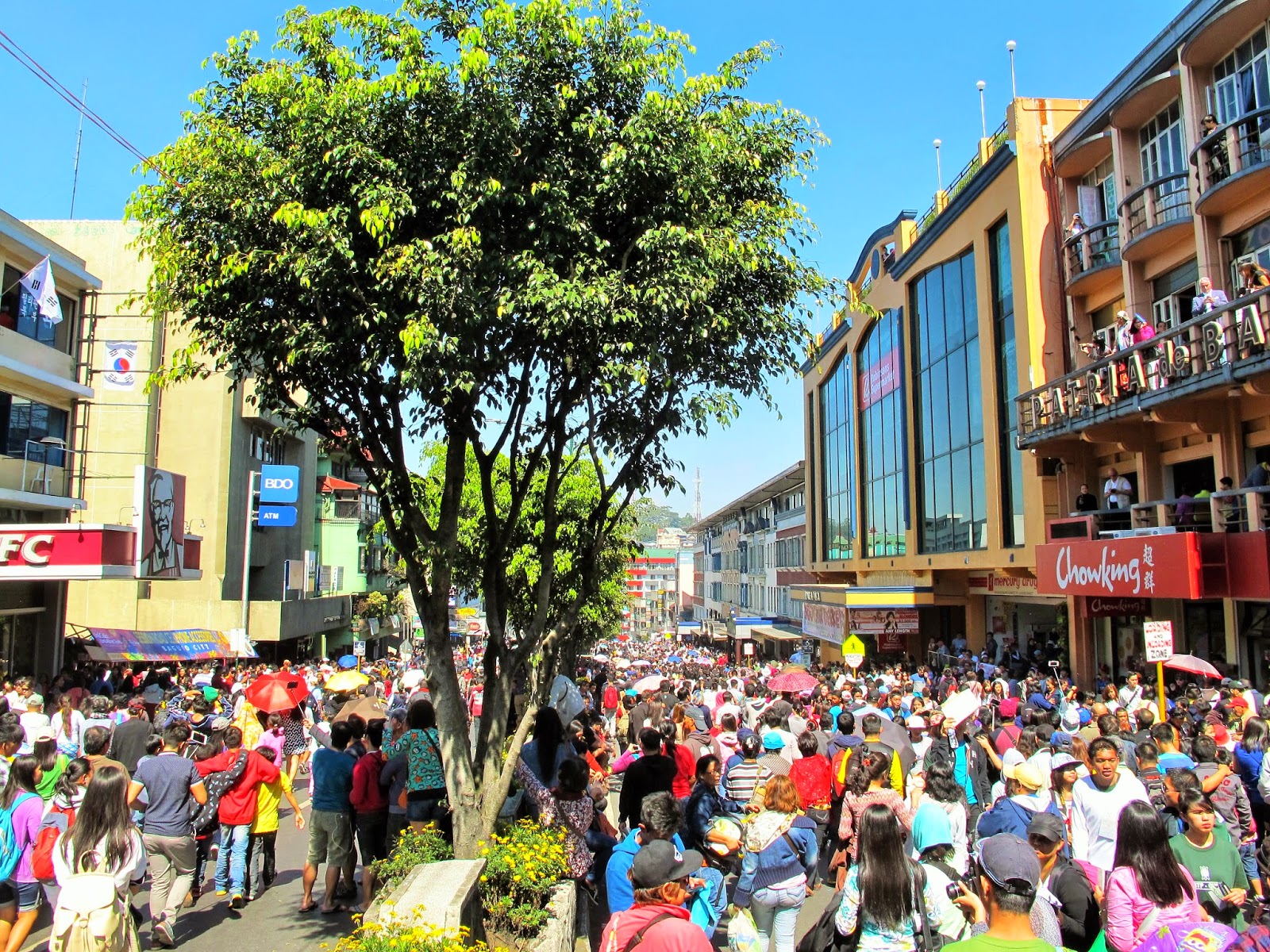
Baguio
City is frequently visited by tourists and excursionists because of its
relatively cooler weather, an assortment of attractions and the Panagbenga
Flower Festival. And just like always, on the weekend of February 28 and March
1, 2015, hundreds of people trooped to the educational and commercial hub of
the Cordilleran region of northern Luzon to witness the colorful street dance
and float parades, the highlights of what is now a month-long festivity. Aside
from holidays, especially Christmas, the festival sees the most number of
visitors in Baguio. This year, nearly two million visitors were estimated
during that weekend.
Many of them were stationed along the parade
route, which started at the Panagbenga Park, went through the historic Session
Road and ended at the Burnham Park Athletic Bowl, where a street-dancing
showdown happened. Session Road, the city’s main road and center of activities,
was particularly packed with spectators.
School children and youths participated in the
street parade and drum and lyre competition, wearing costumes heavily inspired
by the native Cordilleran dresses and embellished with attractive flowers, real
and fake. Different organizations and government agencies also joined the
parade, several with their own costumes and gimmicks. Some men mimicked the
man-in-the-barrel figurines, the iconic and now tawdry Baguio souvenir bearing
a bawdy surprise, to spectators’ amusement, eliciting comments such as “Itaas mo na ‘yan!”
The following day, sixteen floats were
showcased at the Panagbenga 2015 Grand Floral Float Parade. It was a bit fewer
than those in past festivals, but what it lacked numbers was made up by
quality. The floats were covered with flowers—about 90 percent, as required by
the rules—harking back to the event’s inspiration, the century-old American New
Year’s Day celebration Tournament of Rose Parade in Pasadena, California.
Most of the floats came from private businesses
such as the country’s biggest mall chain SM, which has clinched the first prize
honors in the float competition many times in the past; the North Luzon
Expressway (NLEX), whose float depicting touristic icons of northern Luzon was
awarded the first prize; fast-food chain Jollibee, which tied for second place
with government agency Tourism Infrastructure and Enterprise Zone Authority;
fourth-place Cebuano Lhuillier, a pawnshop and money transfer company; and
hotel The Manor at Camp John Hay, which participated in the float parade for
the first time and was awarded the fifth place.
Also an interesting part of the Panagbenga was
the Baguio Blooms Exhibition, which opened at the start of the festival on
February 1 along Lake Drive at the popular Burnham Park. It showcased different
landscape designs, incorporating as much flowering plants as possible. It ran
for five weeks alongside a tiangge,
selling souvenir, food and native products.
After the float parade, the Session Road in Bloom
opened, also a much attended affair in which Baguio’s main road was closed to
traffic until March 8 for a makeshift market, pop-up cafés, unique shops and
good food with nightly concerts. Pedestrians were able to stroll freely.
This year, the Panagbenga Flower Festival met
and even surpassed visitors’ expectations. The parades went on smoothly, the
crowds well-managed. Events were plentiful, spread out for the whole month, in
fact. Over the years, the Panagbenga has become one of the most popular and eye-catching
festivals of the Philippines. Organizers have learned from years of experience,
20 years to be exact. This year’s theme was “Across 20 Years of Blossoming
Together.”
Sadly, however, this year’s festival was also
marked by the absence of Damaso Bangaoet Jr., considered the founder of
Panagbenga, who died on September 15, 2014. The lawyer and former John Hay Poro
Point Development Corporation managing director for Camp John Hay came up with
the idea of the festival to promote Camp John Hay, as well as Baguio City,
taking flowers, one of the most attractive things in the city, as focal point.
The event was adopted by the local government as the city’s official festival.
Through the years, it went through struggles, controversies, a schism and
bickering, which served as instruments to refine the festival.
Organizers and Baguio City mayor Mauricio
Domogan attributed part of the success of the Panagbenga to the media, which
provided constant coverage of the festival, and recently to new routes, making
the city more accessible to more people. Also, volunteerism and participation
of the locals and businesses is said to be vital in making Panagbenga what it
is today.
An example is the participation in the float
parade. Frederico Alquiros, executive committee co-chairman of the Baguio
Flower Festival Foundation (BFFFI), which operates, organizes and manages the
festival, said that one of the reasons of the decline in the number of floats
is the prohibitive cost of mounting. He revealed that about a half a million
pesos is spent on making a float.
The Manor general manager Ramon Cabrera said
that their float, which was designed by filmmaker and artist Kidlat Tahimik and
which reflected local culture, cost about P600,000.
The
prizes of the competition were not much to cover the expenses, but still many
companies join because of the prestige and the spirit of participation. They
consider an honor to join in one’s own festival, said Domogan.
This year, BFFFI expanded an event especially
for Baguio residents. These residents, Alquiros revealed, said that the
festival has become so big that they opted to stay home on parade days, watch
the happenings on television and give the space of the streets for visitors.
So, on February 15, “Handog ng Panagbenga
sa Pamilya Baguio” was mounted at the Melvin Jones Arena for them,
featuring a family painting activity, a kite flying challenge, a variety show
and a fireworks display.
Domogan believes that the festival has become
economically beneficial to the city. It has many direct and indirect economic
benefits, especially to local businesses. The Saint Louis University made a
study of how the festival contributes to the economy of the city, and Domogan
said the results confirmed his belief, revealing that the city earns roughly
P220 to P250 million every time. With this as one of the important impetus,
Baguio City promises to mount better festivals year after year.


















































































No comments:
Post a Comment